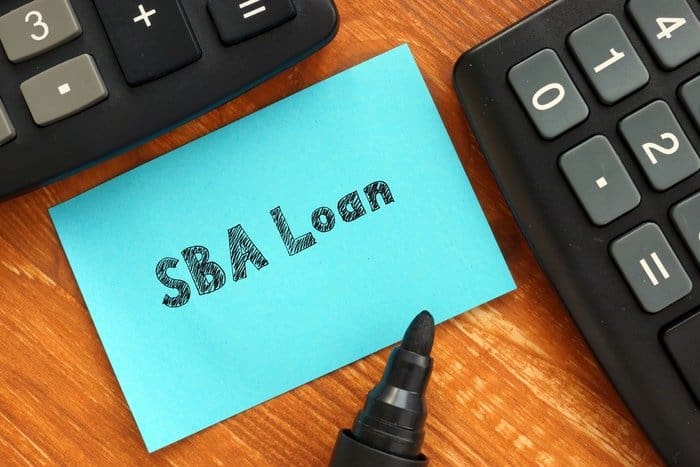Have you ever wondered why so many small businesses fail?
The main reason is they don’t have the funds to keep going. Whether that is because of lack of revenue, too few reserves to properly scale and conserve resources, or mismanagement, doesn’t matter. For small business owners to succeed, they need to understand how to fund a business.
We talked with Paul Akers, Founder of Fast Cap, and Mike Andes of Augusta Lawn Care. Paul has created hundreds of products over the years, while Mike has sold over 60 franchises in 2 years. They both know a little about funding a business and managing it to make money.
First, we’re going to give you information on preparing to get business funding. Then we’ll help you establish the best ways for you to fund your business through self-funding, loans, sharing equity, crowdfunding, and some crypto funding concepts that most business owners aren’t utilizing yet.
Throughout it, I’ll provide resources and input from our interviews with Mike and Paul. Let’s make sure you have what you need to truly benefit from this article.
Preparing to get funding
Before you look for ways of raising money for business, you need to be prepared. Start with our guide to starting up a business. You should do the following tasks before pursuing funding if you haven’t already:
- Performed market research. If you haven’t we suggest you start with our article on market research.
- Performed market validation to verify that there is enough demand for your product or service. If you haven’t, check out our blog on market validation.
- Written a business plan. You’ll need one especially if you are trying to pursue funding from external sources. If you haven’t, we’ve got you covered there too. Check out our blog on how to write a business plan.
- Hopefully, you also have a name. It won’t look very good if you say, “Hey will you invest in my small business that has no name?” If you don’t, go try the following business name generator.
- Know how much funding you need. Let’s look at that more.
How much money do I need to start a business?
Every business is different, but you can start many businesses for under $50,000. That won’t necessarily guarantee that $50K will cover everything a business owner needs to run the business and live, but it’s typically the minimum money to start a business and provide for yourself.
Here’s how I look at it when it comes to financial projections:
Step 1. How much money do you need to live for five years?

You absolutely have to make enough money to cover your bills regardless of cash flow issues or low revenue. Most businesses fail within five years, so how much do you need to make to cover five years of your necessities?
Step 2. What are your additional business expenses?
What additional business costs are you going to have over those five years? In my case, it’s a computer every few years and a few thousand dollars of software each year, but for many businesses, the break-even point is somewhere between $60K and 120K a year.
Step 3. What are other sources of revenue and when do you receive them?
What other sources of revenue do you have? When do you receive them, and how much of them can be applied to business funding? Add these to the third sheet in the workbook I created for you.
- Once you know the answers to the first three questions, you can create projections for your total costs and earnings for the next five years. I would break them down monthly because monthly will sometimes show cash flow issues that strong annual revenue and growth will hide.
- At this point, you should have an idea of the budget for your life over the next five years. Assuming $48K per year living expenses and $60K per business expenses, you are going to need $540K minus your current earnings for the business to make it to the 5-year mark.
Now you should have an idea of how much small business funding you’ll need to get to make it to the point where your business is much more likely to survive.
Paul told us:
Keep reading to hear about the most common source of small business funding.
Most small business owners bootstrap
If you can fund your small business yourself, that’s helpful because this is by far the best way to get funding for small businesses. Paul told us:
A small business owner will typically have several options to be able to self-fund:
- Personal savings
- Increase your disposable income
- Sell assets
- Loan yourself money from IRA/401-K
- Rollover as Business Startup (ROBS)
You will probably use many of these in parallel to get the best results.
Let’s look at each.
1. Personal Savings

You can use savings as a funding option. This method is the most common. Using your own finances as a funding method has the benefits:
- You retain complete control
- No monthly payment on a loan
- Don’t have to pay interest
Unfortunately, it can be the slowest way to create business growth because funding is limited to what you have in savings and your disposable income.
2. Increase your disposable income
Disposable income is increased through two methods, more earnings or cost savings. Most places have a limit on how much you can cut your spending so you’ll probably want to increase your earnings.
Ways to increase your earnings include:
- Asking for a raise if you have been performing well at work.
- Taking on a second job. Some people either choose to do Uber or Lyft so they can control their own schedule.
- Perform freelancing in the field you plan to start a business. We’ll discuss this more below.
Freelancing on sites like Fiverr or Upwork is almost identical to running a business but without as high up-front costs. It will earn you extra money, develop your business skills, and create built-in referrals for your new business. I highly recommend it.
If you’ve never run a business before, remember to charge more along the line of what your employer makes for their service than what they pay you. Companies aim to keep wages at under 30% of the costs.
3. Sell Assets
Many people will sell assets to get money to start a business. One of our competitor’s blogs recommends you sell your car and ride a bike, but that seems a bit extreme especially if your business will require you to get around town.
If you have a bike (and no car), use it to your advantage. Our editor knew a guy who started his business by selling kombucha from a big wooden box connected to the front of his bike and turned it into an epic brand. Check out BiciCafe if you are in the U.S. Virgin Islands.
You are better off selling assets like stocks or rental properties, but if you do sell them to get new business funding, focus on ones that fall into long-term capital gains. Later, I’m going to tell you some tricks that can really hyperdrive this scenario, but they involve crypto.
But for now, let’s talk about taking loans from your IRA or 401-K.
4. Take money from your IRA or 401-K

You can use your retirement accounts for money to start a business, but the next option is a way better solution. I started my business this way and am kicking myself because the assets I sold have quadrupled since then. I’m still going to explain this to you though.
A Roth IRA can be withdrawn tax-free because you already paid taxes on it, but you can pull out money from a traditional IRA or 401-K, but you incur a 10% penalty and back taxes. Sometimes you can structure this as a loan and pay it back to avoid those factors, but you only have five years to pay them back.
I strongly recommend talking to a tax professional about how to get funding this way especially if you have large amounts.
Let’s look at ROBS next.
5. Rollover as Business Startup
ROBS are more complex business strategies that require the following:
- Create a C-Corp.
- Create a 401-K.
- Rollover existing retirement funds to the new C-Corp 401-K.
- Buy C-Corp Stock with 401-K.
- Fund the business with the proceeds from the stock sale.
This allows you to completely avoid taxes on the withdrawal of money from the 401-K, but it creates some unique benefits and challenges on top of that. They include:
- Corporate tax and personal tax if all earnings are not paid as income on paychecks.
- Unlimited gains and losses, with rollovers to different years.
- Corporate taxes are lower than personal taxes once you reach a certain earnings level.
- You can give yourself more benefits.
- You are required to offer any employees the same benefits you receive.
- Medical is fully deductible.
- Additional filing requirements.
Most of these are benefits, but double taxation and employee benefits could be a challenge if you aren’t good at predicting your income. I’d suggest you review the following materials before you decide to take this option:
- Guidant Financial’s explanation of ROBS
- IRS ROBS Guidelines
- IRS Corporate Formation
You can get help with a ROBS from the following companies:
Keep reading for more on how to get funding for a small business.
Borrow Startup Capital

If you can’t get money from your assets, it’s time to look at how to raise capital for a business through borrowing it. The most common are:
- Friends and family loans
- Credit cards
- Refinance your mortgage
- SBA loans
- Traditional loans
- Personal loans
- Peer-to-peer lending platforms
6. Friends and family loans
If you have friends and family, they may be willing to provide loans for you to start or expand your business, but this strategy can end up putting strains on relationships. You don’t want it ending up like the video below.
Remember to treat it like a business arrangement. Show them your business plan, give them the same pitch you would a bank, and honor the terms of the agreement. There are third-party providers who will manage the loan for you. A couple of options are:
Keep reading for other options.
7. Credit Cards
Credit cards are a convenient tool to use to help fund a business as long as you can pay them off in full every month. Unfortunately, if you can’t, the high-interest rates can end up costing you a ton of money.
Most places will accept them, but there are some places that are cash only. Avoid using cash advances because they will normally charge you a fee or extra percentage in addition to removing the grace period for the interest.
If you can only pay with a credit card, most credit cards will allow you to send via payment apps without a cash advance fee, but check the terms of your credit card to verify before using this tip. use apps like:
These apps will let you send money into them and commonly avoid the cash advance fee. The apps charge a higher fee for credit cards than paying with a bank or debit card though. You can then transfer it to a debit account where you can take out money. This preserves your interest grace period and saves you a lot on interest payments.
Almost every bank offers temporary 0% interest rates, but you’ll need to read the fine print of each of them. Some of the best ones are:
- Wells Fargo Reflect – Longest introductory rate as long as you meet the payment requirements.
- Business Advantage – Pay transactions made in the first 60 days with 0% interest over 18 months.
- Chase Freedom Unlimited – Example of their offerings 15 months 0% interest, $200 cashback on first $500 if spent in the first 3 months, 5% cash back on groceries (first year) and travel, 3% on pharmacy and dining, 1.5% on everything else.
All these require a 690+ credit score for a good probability of getting one and 800+ to get the best ongoing interest rates. If none of these sounds like the right one for you, consider how to get a loan from traditional lenders
8. Tap Home Equity

If you have ever wondered how to raise money for a business through your home equity, good news, there are several options to get value out of your home including:
- Home Equity Line of Credit – A secured loan using your house as the security that typically can be used for 10 years with just paying the interest, then the next 20 years you pay interest, plus principal.
- Refinancing Your Mortgage – Refinancing your mortgage works by getting a new loan and paying off the old loan, while pocketing the equity. It basically puts you back where you started, but hopefully with a lower interest rate, payments, and the ability to make a higher return on the equity.
- Second Mortgage or Home Equity Loan – This sounds like a horrible option to me, but I figure I should include it. With a second mortgage, you are taking out another mortgage on the house for the difference between the market value of the home and what you owe. It comes with higher interest and a second home payment each month. I don’t love the idea.
- Reverse Mortgage – If you own your home outright and want to pull money out over time, this might be the method for you. You get to keep the home, the buyer pays you monthly, and when you die they own it. Only problem is the home is no longer yours to give to your kids or sell if you desire to do so.
The first three are available to a homeowner with a good personal credit score from a local bank, credit union, or traditional bank. I suggest reaching out to credit unions near me first because they tend to offer better rates, but you’ll also deal with a lot of real estate fees that are not present in other loans.
Reverse Mortgage Daily is a good resource to learn about reverse mortgages if you are interested. If you fund your business this way, realize that you will have to budget more effectively than with other equity financing options.
9. Personal Loans
If you can get a personal loan to start a business, it may be more cost-effective than real estate loans because it avoids all the fees. You’ll need a great credit score and will still have to pay interest.
You can apply at traditional banks, online lenders, and credit unions. When you apply, ask if you can have your business included on the personal loan so you can start earning business credit. That way, the next time you apply you may be eligible for traditional bank loans through your business credit.
We’ve talked about funding options for people, but now it’s time to look at how to get money for a business through SBA loans.
10. Small Business Administration (SBA) Loans
The Small Business Administration (SBA) was founded in 1953 in a bill passed by Congress to help small business owners succeed. The SBA offers a variety of assistance to new and established businesses including:
- Education – Over 300 different learning objectives surrounding planning, launching, managing, market research, business growth, and mentoring.
- Small Business Grants – Initiatives that are important to the community such as Science Technology Engineering and Math (STEM) businesses.
- SBA Loan Program – Backs bank loans to encourage financial institutions to offer business credit. You can seek funding from banks, credit unions, and nonprofit lenders.
There are three types of SBA loan programs that you can apply for when wondering how to get funding for a business idea:
- 7(a) loan program
- 504 loans
- Microloans
Let’s look at how to get money to start a business through each of these loan programs.
7(a) Loan Program

7(a) loans are the most common type of small business loan that the SBA guarantees. You can get them from traditional banks and credit unions assuming:
- The business is profitable
- You cannot use any other funding options
- You can prove the need for the loan
- The business is in good financial standing with all government agencies
7(a) loans can range from $5,000-$5 million and the SBA provides a guarantee to the lender of 85% for loans under $150,000 and 75% for loans over $150,000. These loans are primarily used as funding options for buying large equipment, inventory, and real estate, but under some scenarios, they allow restructuring of debt.
Review the SBA 7(a) loans page to find out more about the 7(a) program or go talk to your local small business development center to talk to someone about the programs they offer. To apply for a loan, go to the lender match to find potential lenders.
You’ll need to answer a few questions about how much capital you need, whether you have financial documentation, and how the funds will be used. Then they will send your information to alternative funding options. I ran one for one of my business ventures and it came up with nine potential lenders.
504 Loans
504 loans are a much narrower use loan that is only available for major assets such as equipment, land, or buildings. They cannot be used for working capital and they have strict requirements including:
- Net worth under $15 million
- Under $5 million revenue each of the last two years
- Profitable businesses only
- Only offered through Certified development companies (Find one near you on the Find Local Assistance page.)
This may be the option if you need to fund your business expansion.
Keep reading to learn about microloans
Microloans
Microloans are much smaller SBA-backed loans that are available for amounts up to $50,000. They cannot be used for real estate or debt repayment, but are great for working capital, tech improvement, and redecorating your location.
Microloans are 8-13% interest with a six-year time to pay the loan. Go to the SBA page about microloans to learn more.
Keep reading to learn more about a traditional bank loan.
11. Conventional Small-Business Loans

You can also apply for a traditional business loan from banks, credit unions, or online lenders. When applying for bank loans for your own business, you should expect them to want a higher credit score, good financial history, and a great business plan because traditional financing comes without the financial protection of an SBA loan.
The loans range in their offerings from each provider, but you can expect to pay more interest and get shorter loan durations. Be aware that shorter durations mean higher payments. Paying a loan quicker may consume money that could be used for reinvesting in the business.
Before you apply, make sure to raise your credit score as high as possible, and join a credit union to increase your chances of getting a loan or a business line of credit.
Wells Fargo, Bank of America, and Chase provide over $200 million worth of business loans, but other smaller banks like Huntington Bank are also business-friendly. No matter who you apply through, don’t be surprised if you are offered small business funding that is less than you apply for.
12. Peer-to-Peer Loans
Peer-to-peer loans make it where people can borrow money from other successful businessmen, companies, and investors. It will work similar to other types of loans because:
- They check your credit
- You’ll still need the same documentation
- They report credit defaults
- You still have to make monthly payments
Unlike traditional banks, platforms like Funding Circle and Lending Tree have a variety of lenders competing for your loans which should save you money and time compared to going to multiple banks. Funding Circle was recognized as the best small business loan of 2021 by Money. Unfortunately, if you live in Nevada, you can’t get them.
Now you have ideas of how to get startup money for a business from lenders, but you can also sell equity.
How Much Money to Start a Business that Sells Equity
Businesses that can sell equity tend to be at least a $100 million market opportunity. If your market opportunity is not legitimately $100 million, go back to the section on ROBS above because your 401K is probably the only one that will buy equity from you.
If you’ve ever wondered how to get start-up money for a business from venture capitalists, angel investors, or incubators and accelerators, they focus on buying a portion of your company which means you’ll be sharing your profits with them.
Check out our playlist of Entrepreneurs who made deals on Shark Tank for insight on how to get deals with the big fish.
These options are typically reserved for businesses that will make hundreds of millions of dollars. However, when you are just trying to make a few million from your business, you don’t want to give up any equity.
13. Venture Capitalists
Venture Capitalists (VCs) focus on buying equity in a business that has huge potential, helping it grow, then making millions or billions when it holds its IPO. IF you are going to try to work with a VC, you need to have a lawyer who is extraordinary at contract law.
If you’ve ever watched The Social Network, it shows how Mark Zuckerberg started Facebook by stealing the idea, then getting his CFO to sign a contract where all the diluted shares came out of his portion of ownership, screwing him out of billions. Don’t let that happen to you.
14. Angel Investment
Angel investors are similar to venture capitalists, but they are typically a single person as opposed to a major corporation. These investors will offer venture capital in a promising project they believe in, but it is hard to get angel investors’ attention because they have so many people competing for the same funds.
These are some of the best places to look to find angel investors:
- MicroVentures
- Tech Coast Angels
- Social Venture Circle
- Golden Seeds LLC
- Band of Angels
- Hyde Park Angels
- Alliance of Angels
- AngelList
- Angel Capital Association
Now that you know about VCs and angel investors, let’s talk about incubators and accelerators.
Incubators and Accelerators
Incubators and accelerators are typically run by VC’s and Angel investors that want to make sure their venture capital firms get a return on their investment. They will typically supply:
- A coworking space
- Lawyers
- Administrators
- Financial consultants
- A marketing team
- Potentially, a skilled team of developers
Basically, they are helping the entrepreneur have the team and staff they need to succeed at creating billion-dollar companies. If you have an idea that you think is a billion-dollar idea, search for incubators near you.
Miscellaneous Funding Opportunities
The following are miscellaneous options for funding that some businesses may be able to use.They are more challenging than some of the other strategies, but they may have benefits if utilized correctly.
15. Small business grants
The SBA has small business grants for exporting, STEM, technology implementation, and management assistance. Learn more about SBA grants. For a list of all government financial opportunities check out grants.gov, which has grant co-op agreements, and procurement contracts for both people and businesses.
16. Crowdfunding

A crowdfunding platform helps entrepreneurs pitch business and product ideas to individuals and if they love the idea, they can contribute small amounts for the project in exchange for being one of the first customers.
If you are going to take this approach, I would suggest finding a freelancer on Upwork with a proven track record of creating great crowdfunding campaigns and making them sign a non-disclosure agreement. Make sure to check their reviews to see how many projects they have done that are similar. Also, ask for links to the crowdfunding ventures they have helped with in the past.
Popular crowdfunding platforms include:
Those are all the mainstream ways of funding a business. Next, I’ll discuss a couple of crypto ways that are pretty cool.
17. Funding a business with crypto
Cryptocurrencies have some fairly unique options that can be really beneficial for small businesses. The primary characteristics of crypto that can help businesses with funding are:
- Use stable coins – Use USDT and USDC, to generate interest of up to14% and they are pegged to the US dollar. I personally use USDC on Crypto.com (they have cyber security insurance and store the funds offline) on a flexible term to earn 6% which comes out to $1.15 a week per thousand dollars. You can accept payments for your business through them too.
- Decentralized Finance (DeFi) Lending – This can be highly beneficial if you have substantial resources but don’t qualify for loans from traditional lenders. The way it works is that you provide crypto for the secured loan. You can spend the loan and pay it back (plus interest), then you get your crypto back.
- NFT titles – There has been some success at converting titles of homes into Non-fungible tokens and using the NFT as a secured loan.
I suspect in the following years you will see more beneficial ways to use crypto to help fund businesses, but we are in the early stages of this technology so I want to start helping people become aware of the options.
Get your business funded

We’ve given you everything you need to decide which funding option works for you. You’ll probably want to use a combination of them over the life of your business.
If you are ready to take the next step and actually apply for funding, we have preferred lending partners that will provide small business funding for up to $5 million dollars for as little as 6% interest. Check out our lending partners today.
What funding strategies would you like to learn more about?




